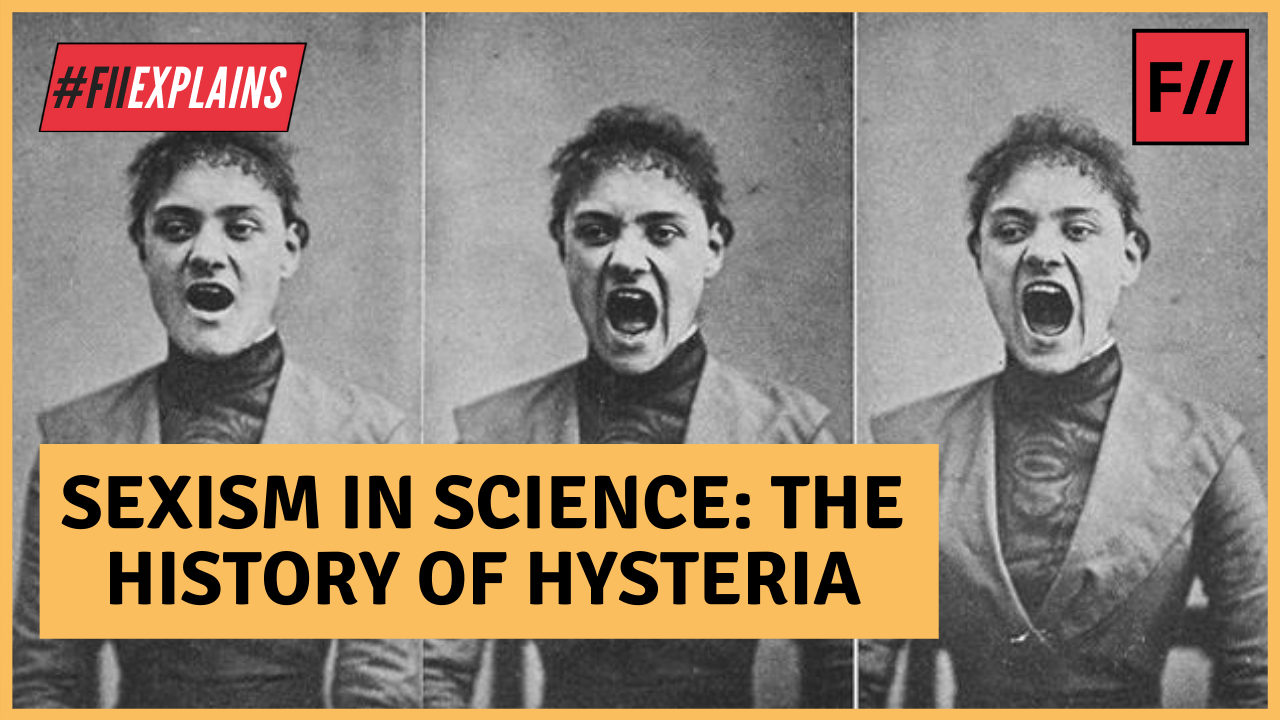‘Hysteria’ is colloquially used to describe an exaggerated or uncontrollable emotion or excitement.
It is also an archaic term to refer to a psychological disorder characterized by conversion of psychological stress into physical symptoms.
However, Hysteria has very sexist roots.
Prior to 1952, the term was used to refer to an exclusively female disease, manifesting in symptoms like
- sexual desire
- anxiety
- insomnia,
- heaviness in the abdomen,
- irritability,
- loss of appetite for food or sex,
- (paradoxically) sexually forward behaviour,
- and a “tendency to cause trouble for others”
(Totally normal things to feel?)
For most of history, it was seen as a mental illness caused by a malfunctioning uterus. The term ‘hysteria’ comes from Greek word ‘hystera’, meaning uterus. For the Greeks, hysteria was caused by the “wandering womb”.
The 1840s psychologist Frederick Hollick wrote of the catch-all Hysteric diagnosis, and explicitly named it in terms of gender. According to him, Hysteria was a result of the imperfection of female organs.
Who was likely to suffer from hysteria?
“Those who have deranged menstruation, also widows, those who have no children”
What were the causes?
“Some of the immediate causes are, the first period, suppressed menstruation, late marriage, vicious habits… disappointment, particularly in love, reading sentimental and exciting romances, and disagreeable, painful, or sorrowful sights”
In every narrative of Hysteria, male psychologists viewed men at the center of the female psyche, and everything the woman did was defined or interpreted in terms of her relationship to or desirability to men.
Hysteria was also a way of pathologizing women who violated Victorian definitions of female sexuality.
Watch this video to find out more about this sexist “illness”!
About the author(s)
Feminism In India is an award-winning digital intersectional feminist media organisation to learn, educate and develop a feminist sensibility and unravel the F-word among the youth in India.




